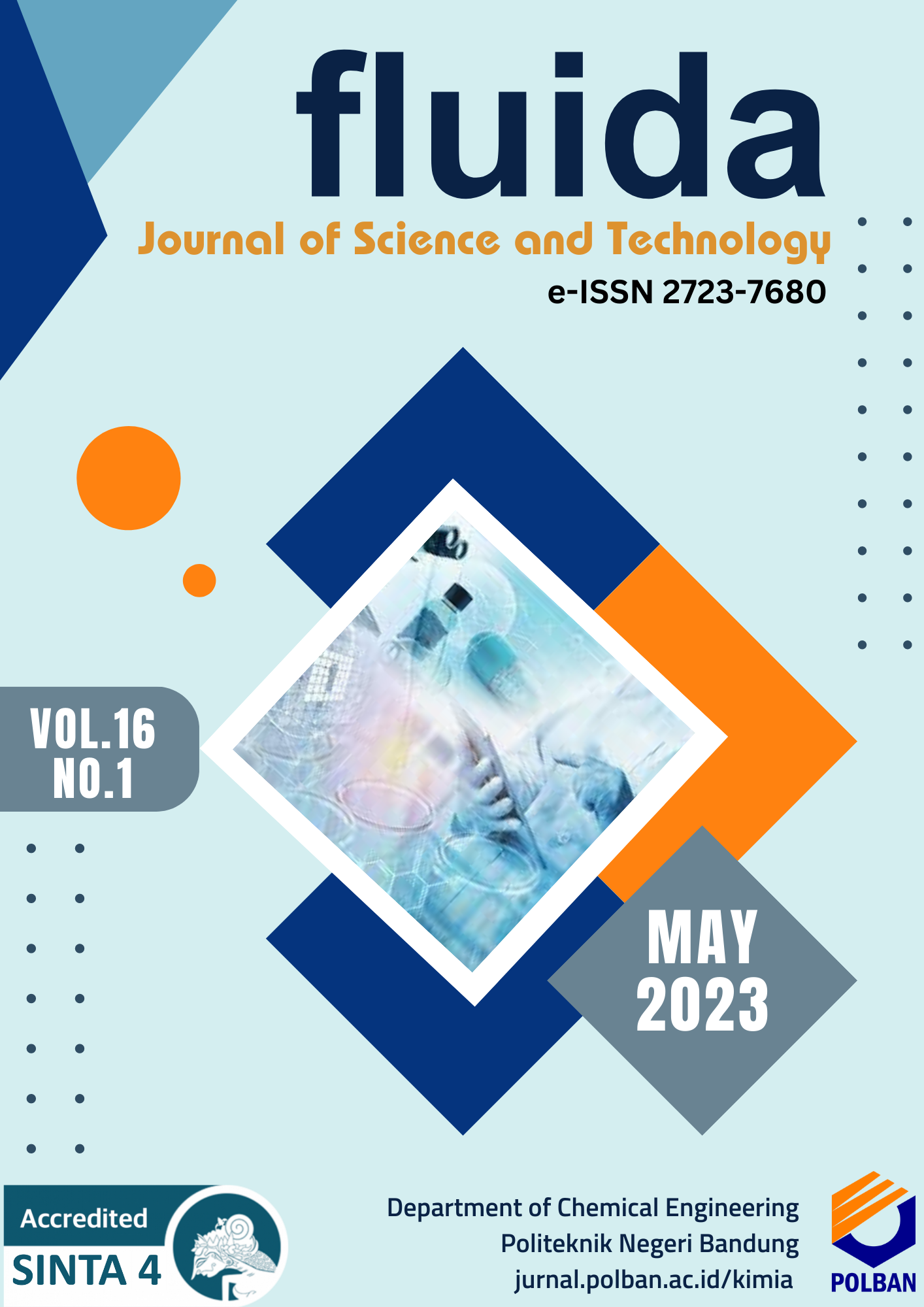The Dynamic Simulation of The Benzene and Toluene Distillation Process
Main Article Content
Abstract
Benzene and toluene are products of petroleum catalytic fractionation and dehydrogenation, which are massively used for industrial purposes. The mixture of these two compounds forms an azeotropic condition that requires high energy and expensive investment. The separation process simulation is the appropriate way to address this problem. The technique of separating benzene and its derivatives from toluene is crucial if the product is to be reused for the following process. We propose a simulation of the separation of benzene and toluene using Aspen HYSYS with several assumptions (Peng-Robinson Fluid Package and Transfer Function Block) and operating conditions settings (pressure, flow rate, and vapor fraction). The simulation results were analyzed by comparing treatments without and with dynamic system settings (sudden and gradual changes in operational parameters for 30 minutes). The simulation results revealed that the stepwise dynamic system configuration might increase 10% extra moles of benzene. In addition, dynamic system settings also significantly affect the concentration of the bottom product.
Downloads
Article Details

This work is licensed under a Creative Commons Attribution-ShareAlike 4.0 International License.
An author who publishes in the FLUIDA journal agrees to the following terms:
- Author retains the copyright and grants the journal the right of first publication of the work simultaneously licensed under the Creative Commons Attribution-ShareAlike 4.0 License that allows others to share the work with an acknowledgement of the work's authorship and initial publication in this journal
- Author is able to enter into separate, additional contractual arrangements for the non-exclusive distribution of the journal's published version of the work (e.g., post it to an institutional repository or publish it in a book) with the acknowledgement of its initial publication in this journal.
- Author is permitted and encouraged to post his/her work online (e.g., in institutional repositories or on their website) prior to and during the submission process, as it can lead to productive exchanges, as well as earlier and greater citation of the published work (See The Effect of Open Access).
Read more about the Creative Commons Attribution-ShareAlike 4.0 Licence here: https://creativecommons.org/licenses/by-sa/4.0/.
References
[2] E. Iraola, J. M. Nougués, L. Sedano, J. A. Feliu, and L. Batet, "Dynamic simulation tools for isotopic separation system modeling and design," Fusion Eng. Des., vol. 169, no. March, pp. 1–5, 2021, doi: 10.1016/j.fusengdes.2021.112452.
[3] A. Caspari et al., "A wave propagation approach for reduced dynamic modeling of distillation columns: Optimization and control," J. Process Control, vol. 91, pp. 12–24, 2020, doi: 10.1016/j.jprocont.2020.05.004.
[4] W. Marquardt, "Nonlinear model reduction for optimization based control of transient chemical processes," AIChE Symp. Ser., vol. 98, no. 326, pp. 12–42, 2002.
[5] Y. Ma, P. Cui, Y. Wang, Z. Zhu, Y. Wang, and J. Gao, "A review of extractive distillation from an azeotropic phenomenon for dynamic control," Chinese J. Chem. Eng., vol. 27, no. 7, pp. 1510–1522, 2019, doi: 10.1016/j.cjche.2018.08.015.
[6] A. Caspari, J. M. M. Faust, P. Schäfer, A. Mhamdi, and A. Mitsos, “Economic Nonlinear Model Predictive Control for Flexible Operation of Air Separation Units⁎,” IFAC-PapersOnLine, vol. 51, no. 20, pp. 295–300, 2018, doi: 10.1016/j.ifacol.2018.11.028.
[7] S. Liang et al., "Chemical Engineering Research and Design Insight into pressure-swing distillation from azeotropic phenomenon to dynamic control," Chem. Eng. Res. Des., vol. 117, pp. 318–335, 2016, doi: 10.1016/j.cherd.2016.10.040.
[8] S. Skogestad and M. Morari, "Understanding the Dynamic Behavior of Distillation Columns," no. 3, pp. 1848–1862, 1988.
[9] J. Lee, W. Kim, J. Choi, N. Gha, and Y. Kim, "Dynamic solar-powered multi-stage direct contact membrane distillation system : Concept design, modeling, and simulation," no. January, 2017, doi: 10.1016/j.desal.2017.04.008.
[10] B. Sun, S. Cao, D. Li, J. He, and L. Yu, "Dynamic Micro-Expression Recognition Using Knowledge Distillation," vol. 3045, no. c, 2020, doi: 10.1109/TAFFC.2020.2986962.
[11] A. M. Karam, A. S. Alsaadi, N. Ghaffour, and T. M. Laleg-kirati, "Analysis of direct contact membrane distillation based on a lumped-parameter dynamic predictive model," DES, vol. 402, pp. 50–61, 2016, doi: 10.1016/j.desal.2016.09.002.

